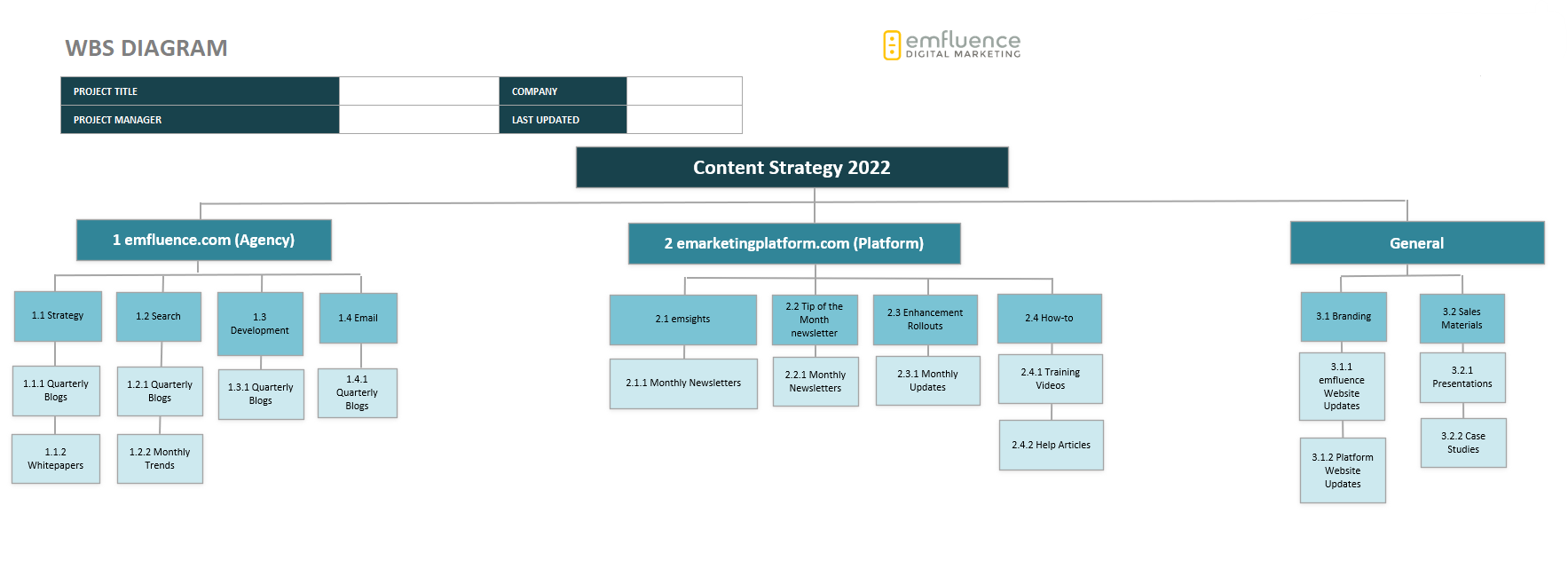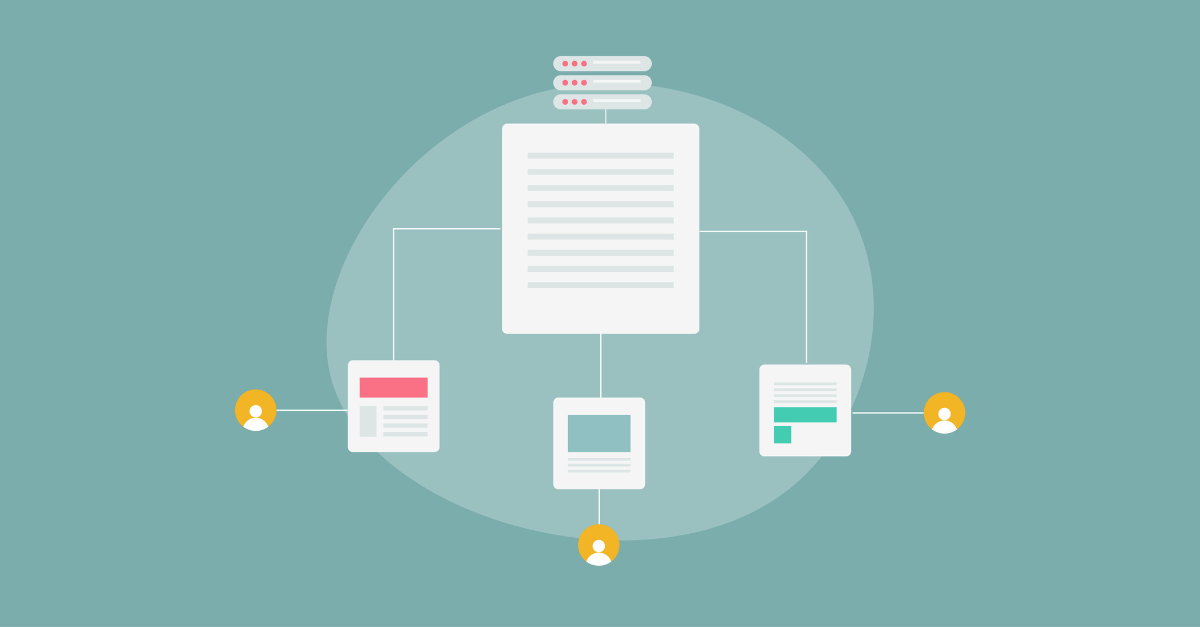As a project manager, my forte isn’t content strategy or copywriting. But I do appreciate a good process and believe strengthening process can strengthen output.
A lot of work goes into content planning—analyzing data and defining your audience, topics, formats, goals, etc. All of that is fruitless work if it’s not followed with a strong implementation plan.
Once you have your content strategy planned out for 2022, follow these steps to create and maintain a schedule.
Create a Breakdown of Deliverables
You likely have a head start on this list if you have content topics and focus areas already identified. Put some thought into organizing those deliverables—by department, channel, stage in the customer journey, etc. The goal is to segment work into manageable pieces that can be assigned to a person or team.
Instead of identifying the tasks, which typically include verbs, use nouns to describe the end deliverable. Most work breakdown structure (WBS) diagrams have about three levels and each item represents work that takes no less than a day and no more than two weeks to finish.
Here’s an example of what this might look like:

Define Activities from Your WBS
Now that you have your deliverables defined, identify the tasks and activities associated with each. This time use verbs. For example, a whitepaper deliverable may include these tasks:
- Define the goal, audience and topic
- Gather research
- Draft content
- Source images
- Create the design/layout
- Gather feedback
- Revise
- Post/share
Your tasks might look the same for each of your blog posts. Though it seems repetitive, it’s helpful to include each task breakdown for scheduling purposes. A good place to document these activities is in your project management software, or a simple Excel spreadsheet. You will want to follow up with assigning each task to someone for completion, so create a filterable list that can be updated and maintained for tracking purposes.
Sequence Activities and Define Resource Requirements
Identify who will be assigned to complete each task. This step is particularly helpful if you have a larger team and more specialized content requirements. It’s also great for identifying any gaps and resourcing needs.
If you don’t have anyone willing or capable to write on a certain topic, you may discover that interviews are necessary and you will want to create another task for that. If you have a smaller team drafting all content, assigning resources is the easy part, and you can put more time into sequencing activities—where will you start, what things can happen concurrently, what tasks are blocked until another activity takes place, etc.
As you sequence activities, consider timing requirements and opportunities like seasonal relevancy and milestones, or events impacting your content strategy.
Estimate Activity Durations
Gather activity estimates from the people assigned to tasks.
This step is easy to skip or rush, but it’s critical in creating a sound implementation plan. You don’t have to rely solely on your team for estimates. If you have a time tracking software or some past content projects you can look back on, come up with a list of average estimates for your team to review and change as needed.
People can be shy to give activity estimates because they’re afraid they’re not aligned on timing expectations. If you provide a starter estimate, this should help remove that intimidation barrier.
Develop a Schedule
You now have everything you need to create a sound schedule: deliverables, activities, resource assignments, task estimates and sequencing information. Put all of that together to create a content schedule for 2022, keeping in mind other project assignments and timing constraints on your team.
Keep an eye out for areas where a single person is overutilized; you may decide to revisit task sequencing or assignments.
Create Task Reminders as Needed
There are many tools for managing task assignments and workflows. Use your preferred system for organizing task information and due dates. For plans where change is expected or welcomed, I like to tackle detailed task assignments quarterly to avoid rework.
These planning processes should help bring clarity to your content strategy and provide helpful documentation to refer back to throughout the year.
Need help planning your 2022 content strategy? Contact us at expert@emfluence.com!



